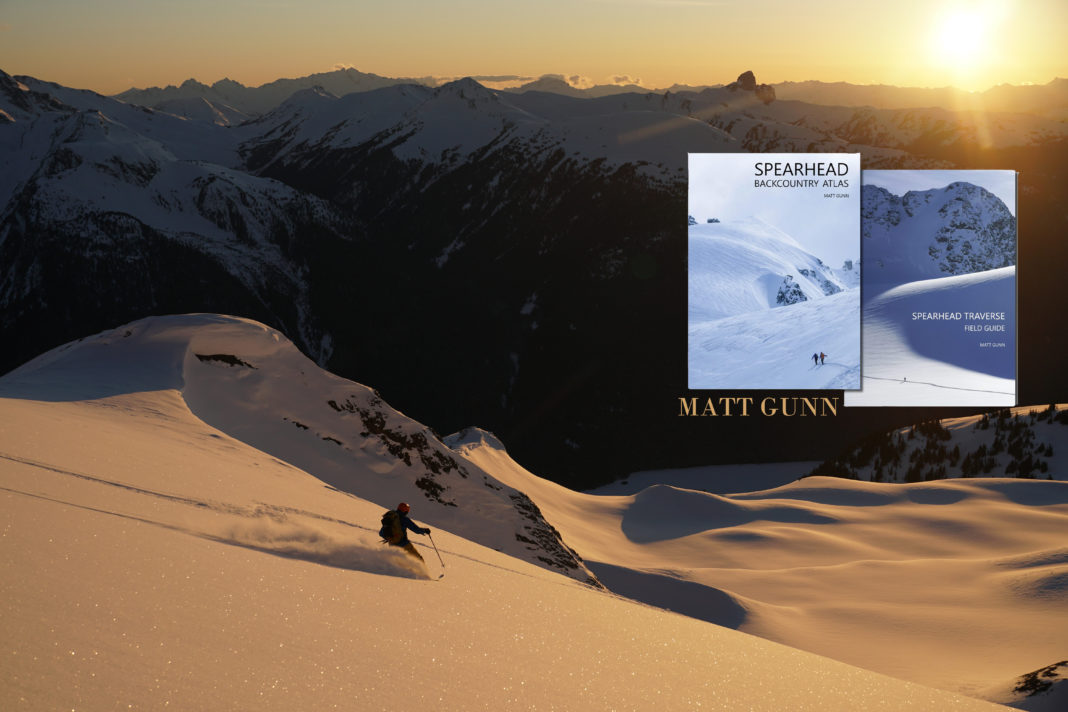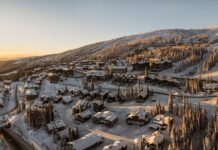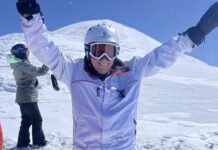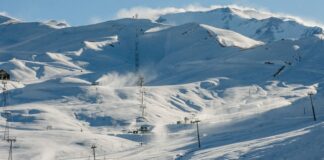The Spearhead Backcountry Atlas and field guide is the ultimate guide book for the Spearhead traverse which links Blackcomb Mountain to Whistler Mountain. A must have for any skier or splitboarder in the Coast mountains, BC. This is an interview with the creator – Matt Gunn. This interview is taken from SKIER Magazine issue 20.2, Winter 2022.
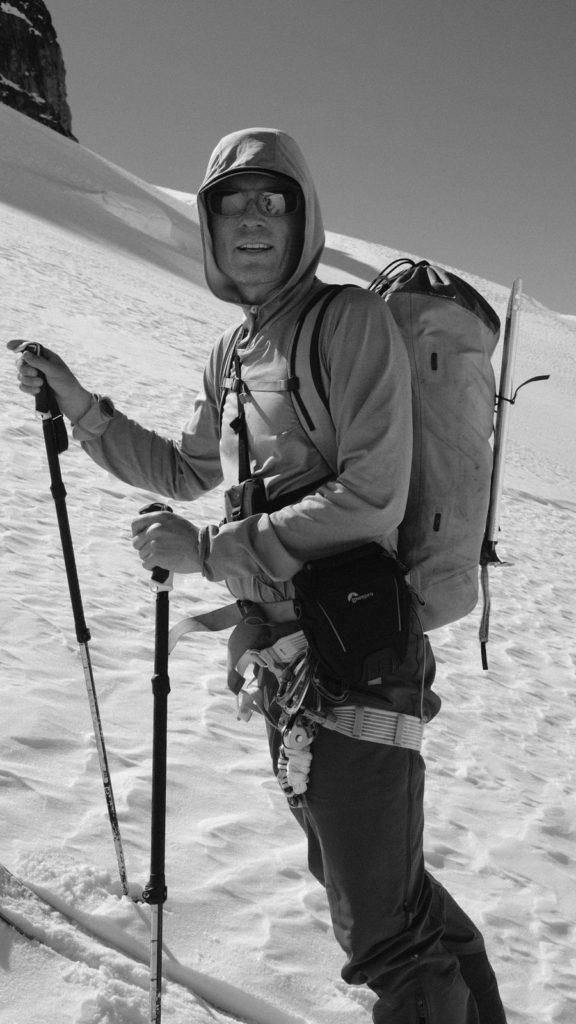
My name is Matt Gunn, I’m a Squamish dad with a passion for spending time in the alpine.
My first guidebook was Hikes Around Invermere. It describes the trail network near my home town which includes some spectacular areas such as the Bugaboos and Assiniboine. It was released in about 1998 I think.
My latest Guidebook is actually a pair of books: the Spearhead Backcountry Atlas and the Spearhead Traverse Field Guide. These were released in 2020 and 2021.
I wrote and published these books to create the resources that I would have liked to have when I first started touring in the area in the late 90s. I wanted to pull together the information, images and maps that would help inspire and inform adventures in this incredible area.
Writing the books has been a big project that I worked on slowly over 20 years. The process involved spending lots of time in the Spearhead Range getting to know the terrain and descents, taking a ton of images, both from the ground and from the air, and then spending an incredible amount of time in front of a computer trying to figure out how to present the information in a coherent fashion that would help people make the most of their time in the mountains.
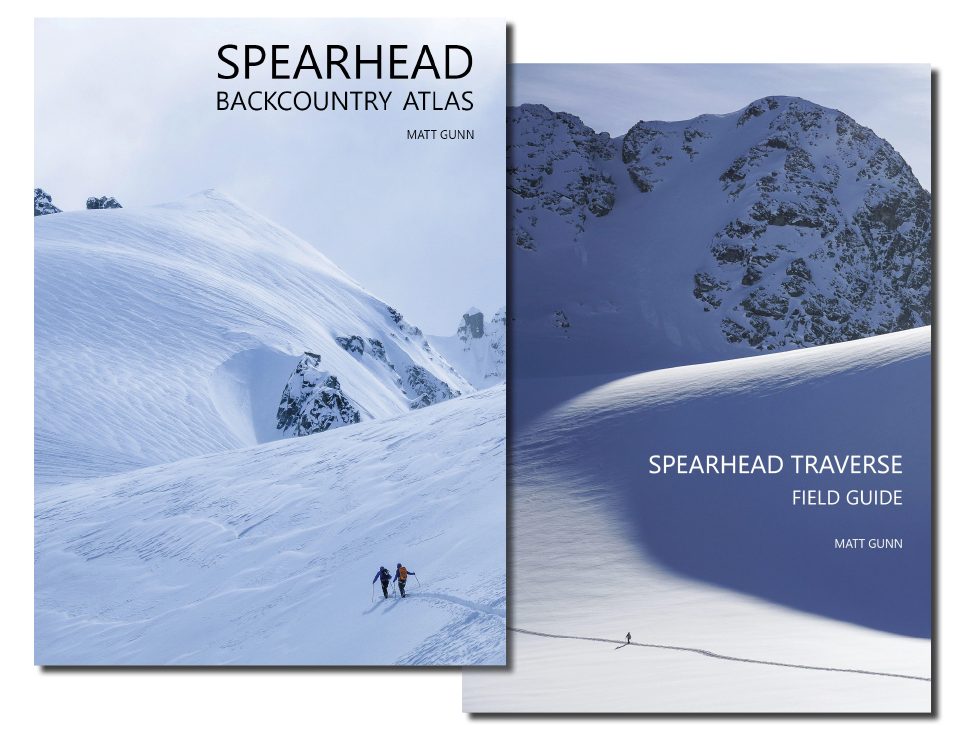
Your first expedition into the Spearhead Backcountry was back in 1999, what was the ski touring scene like back then?
It was a lot quieter back then. Way, way fewer people. I got into the coast scene through the Varsity Outdoor Club at UBC. It was a pretty awesome crew of fun people with a passion for adventure and time in the wilderness. I think the people I was touring with had a different focus than what was happening in Whistler and Pemberton. There was less of a focus on steep descents and more of a focus on getting into the backcountry with friends, exploring different areas as multi day trips and exploring.
Why did you choose to create a guide book on the Spearhead traverse?
I actually started out working on a broader project that covered more ground, but it’s been a slow process and I felt there was something really good that could be made for the Spearhead alone. It’s such an incredible area with such great access and so many options that I thought it would be a great focus. And I really loved the area. I lived for several years in the Kootenays where virtually every ski tour started out using a sled and when I moved back to the Sea to Sky I was stoked on the easy access and simplicity of touring off the resort. It’s really hard to beat sliding off a T-bar at 2250 m and having an entire range of peaks and glaciers right in front of you.
At what point did you start to record all the route information and start photographing the mountains and slopes in this guide book? What was that process like?
I was thinking about the project pretty much from my first trip into the Spearhead in the late 90s. I felt there was an opportunity to pull together a solid set of high quality images and maps that would really highlight the amazing opportunities for touring in the area. I started taking route shots and making notes right away and kept at it ever since. I absolutely have loved the process, writing these books is a real labour of love, but it’s incredibly satisfying. I really enjoy exploring all the little corners and figuring out the nuances of getting around and accessing the various zones.
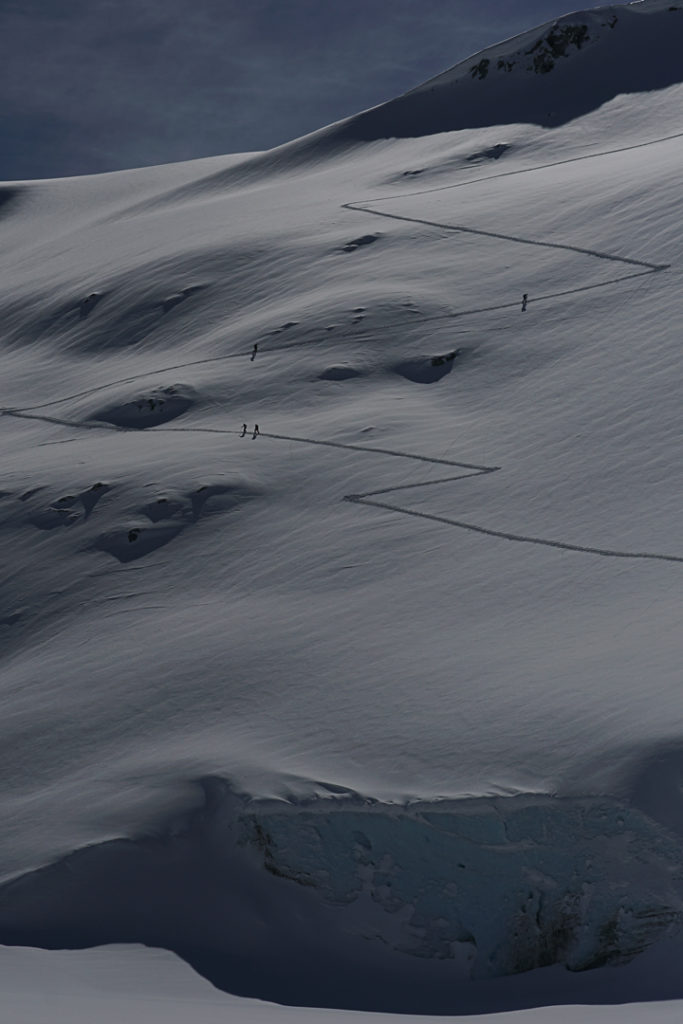
The imagery in this book is fantastic, consisting of a nice variety of action photographs, aerial photographs and maps. Did you take all the photos yourself?
I took all the images in the book, except one that Rich Prohaska kindly gave me for the access point to the descent off Iago which I hadn’t contemplated including until only a short time before going to print. The images were collected over many years of touring throughout the area and many chartered flights in Cessna planes out of the Lower Mainland and Squamish. I really love photography, both of the terrain and the activity, the atlas me a great focus for producing images. These days social media provides a big focus for people interested in photography but for many years I was shooting slides and the main focus was the occasional potluck dinner or submitting images to the MEC catalogue. In those days it was nice to have an additional potential outlet for the images I was taking.
Is the Whistler backcountry becoming crowded? Do you think that guide books can lead people to bite off more than they can chew?
I think that’s a really subjective question. I’m a pretty social guy and I find that people who tour are generally pretty great people so I don’t mind seeing them in the backcountry. In fact, I really love the opportunities for bumping into friends or acquaintances at places like the Glacier Creek Lodge (pre Covid), East Col, and the start of the Flute skin track. I’ve also met people for the first time in the Whistler backcountry that have become good friends. I think the key is to understand the context. Whistler is one of Canada’s biggest tourism assets. You just can’t show up and expect that no one else will be there. If you want a mountain to yourself there are many, many places you can go to in this Province; Whistler just doesn’t happen to be one of them.
With regards to people getting in over their heads I do think it’s really important for people to be realistic about their abilities and the risk inherent to the activities. I’ve tried to make it pretty clear in the atlas and included a plain language warning about the risks involved in one of the most prominent places I could find – the inside flap of the rear cover. It’s impossible to use the book without seeing that warning pretty much every time you pick it up. Ultimately it is on individuals to make the right choices based on their abilities and the conditions and I am encouraged by the increasing awareness, education and respect for good decision making I see in the community.
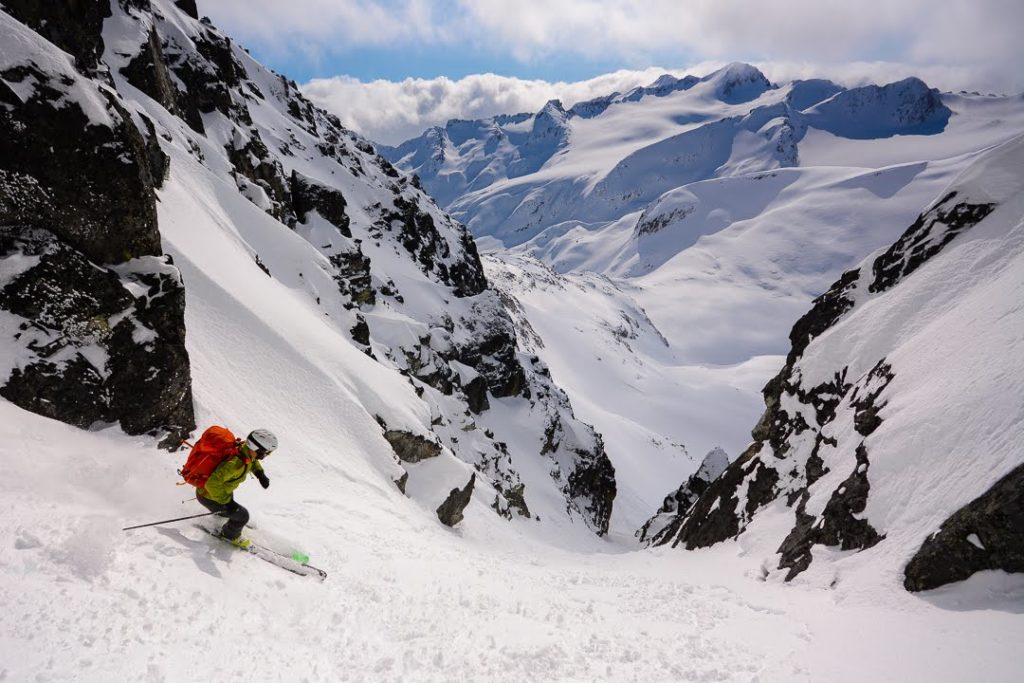
Us skiers love a good story, can you regale us with your favourite tale of the Spearhead traverse?
In the spring of 2015 I was doing the Spearhead Traverse as a day trip with 3 buddies. We had planned to take turns carrying two ropes and 2 ice axes. About half way through the day at the Quiver-Ripsaw Col I passed the rope and ice axe I was carrying to my partner, placing the gear in the snow beside his pack. A couple of glaciers later I was taking a picture as he skied past me and I noticed my ice axe wasn’t lashed to the back of his pack. I asked him where it was and it immediately dawned on both of us that he had picked up the rope but forgotten the axe. I contemplated going back for the axe, which was given to me by one of the MEC merchandise buyers while I was working at the head office as the photo guy. It was a great Cassin product called the Ghost, but MEC never ended up carrying it in the store. I’ve often wondered if I was supposed to bring it back and he had forgotten about it… Regardless, it also had some sentimental value, as it was the axe I had used throughout my time climbing peaks for another guidebook, ‘Scrambles in Southwest British Columbia’. Unfortunately it was late enough in the day that it didn’t make sense and we carried on with the trip. That evening while we were hanging out in my living room I couldn’t get the axe out of my mind, sitting in the snow at the back end of the Spearhead. I kept thinking it would be great if there was a way I could reach out to the ski touring community and ask if anyone had picked up the axe. That night I created a Facebook group, invited every backcountry skier I knew, and made a lost and found post for my axe. That group is now South Coast Touring, which has over 20,000 members, and probably a few too many lost and found posts. Unfortunately I never got the axe back, but I did find the exact same item used on eBay, and my buddy split the cost of it with me.
How can people keep up-to-date on your adventures and new releases?
I post images on Instagram at @matt.g.gunn and on my website coastbackcountry.com
Where can people buy a copy of Spearhead Backcountry Atlas and any of your other guide books?
Buy them online at spearheadbackcountry.com. I offer free shipping for folks that buy the Spearhead Guidebook Set, which includes the Spearhead Backcountry Atlas and the Spearhead Traverse Field Guide.
Any shout outs and parting words of wisdom?
Be safe. Be friendly. Have fun.












